
First & last frames of the time lapse video, 6 p.m. to 6 a.m., January 6th, 2016


An extremely interesting video of the process of crystallofolia has been posted online. Enjoy the video.. I highly recommend it. I have extracted 14 frames presented for discussion below indicating points of interest. These images assume that you have seen the video.
Details of the photographic setup:Canon 6D on a Ravelli APGL4 tripod, Canon AC power cord (to allow 12 hrs of photos), a cheap intervalometer for the camera to trigger the shutter once a minute, Canon 24-70 mm macro lens at 70 mm, f/10.0 for increased depth of field, 0.6 sec exposures, 2 table lamps with LED bulbs (daylight color balance).
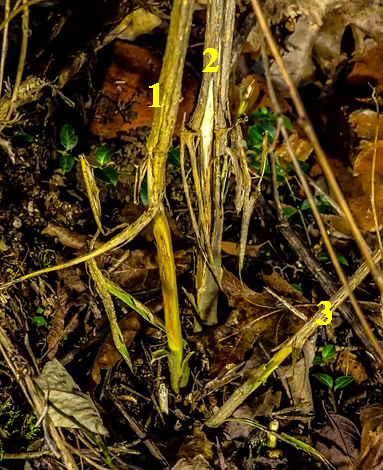
Frame 1 |

Detail |
|---|
Frame 1: the 3 plants shown have already experienced at least one recent frost eruption this winter. Although only the base of the plants is shown, the stem of this species, Verbesina virginica is often 5–6 feet tall. The earlier event has ruptured the stem epidermis, and especially plants 1 & 2 show that it was torn loose with some force. Once this has happened, the vascular system above the base will no longer display frost. (And although this process often affects both perennial and annual plants that are not yet dead or dormant, once it happens only a handful of perennial species are known to provide subsequent frost.)
An early repeat frost performance is generally stronger, since the vascular channels that carry the sap to stem edge have been opened, providing simpler access for egress - until they later degrade.
The detail shows a lot of green tissue inside the torn epidermis of plants 1 & 3. See also Frame 2.
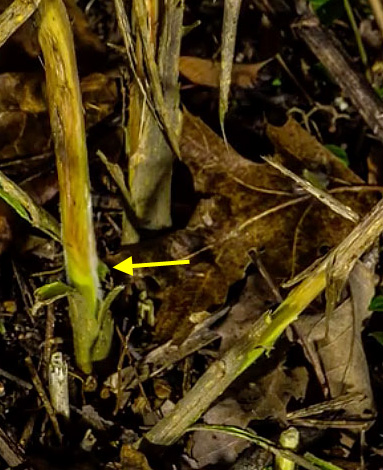
Frame 2 |
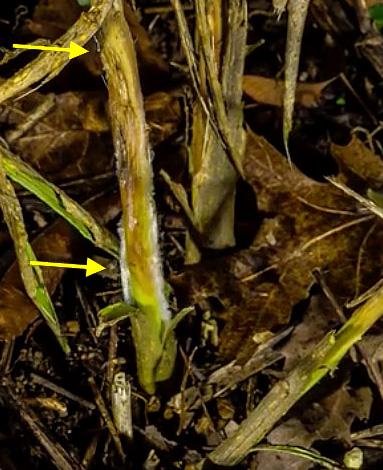
Frame 3 |
|---|
Frames 2 & 3: Ice begins to exit the largest stem 1. This occurs at the very bottom of the stem, frame 2. Then somewhat later it exits higher up, frame 3. The other stems have not yet produced ice.
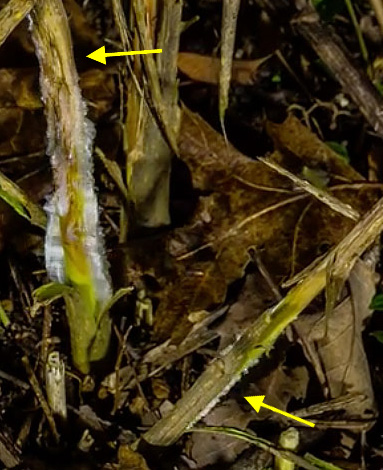
Frame 4 |
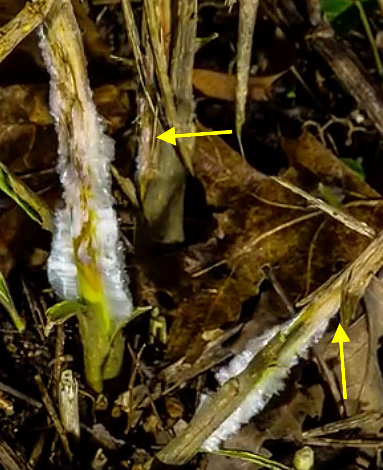
Frame 5 |
|---|
Frames 4 & 5: Ice starts at the bottom of stem 3, frame 4, and then stem 2 and higher on stem 3, frame 5.
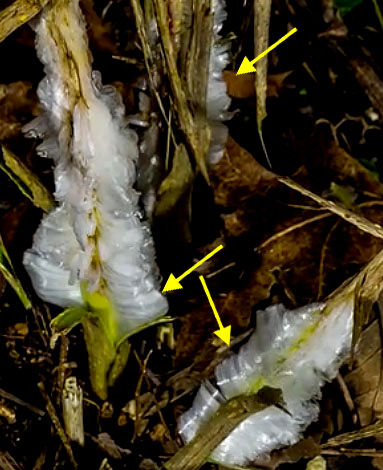
Frame 6 |
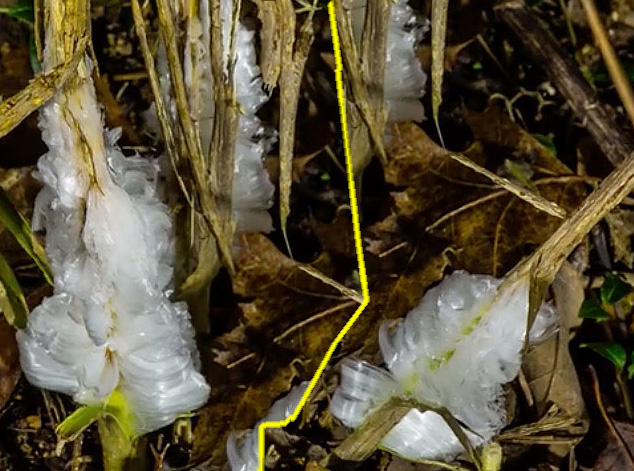
Frame8 & 9 |
|---|
Frames 6 — 8: Striated bands are formed on stems 1 & 2. These striations result from the rows of vertically aligned egress cells along the stem.
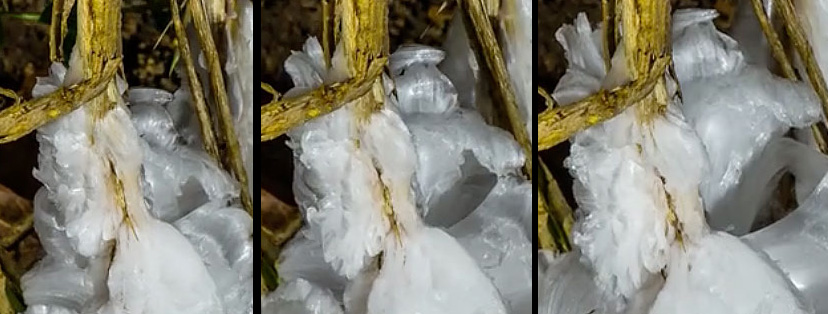
Upper portions of stem 1, frames 10, 12, 14 (last) |
|---|
Frames 10, 12, 14, upper stem 1: The upper vascular structure is already degraded and does not produce nice bands. But it does grow over the sequence.
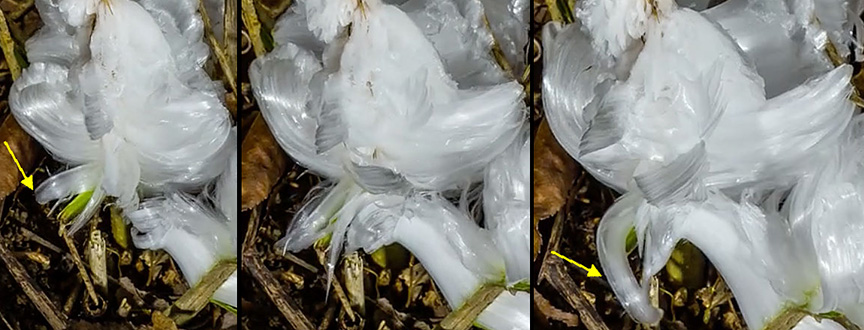
Lower portions of stem 1, frames 10, 12, 14 (last)[Click for larger image] |
|---|
Frames 10, 12, 14, lower stem 1: The lower vascular structure of stem 1 is still intact and produces long bands that grow over the sequence.

stem 3, frames 10, 12, 14 (last)[Click for larger image] |
|---|
Frames 10, 12, 14, stem 3: The lower portion of stem 3 produces narrow long bands.